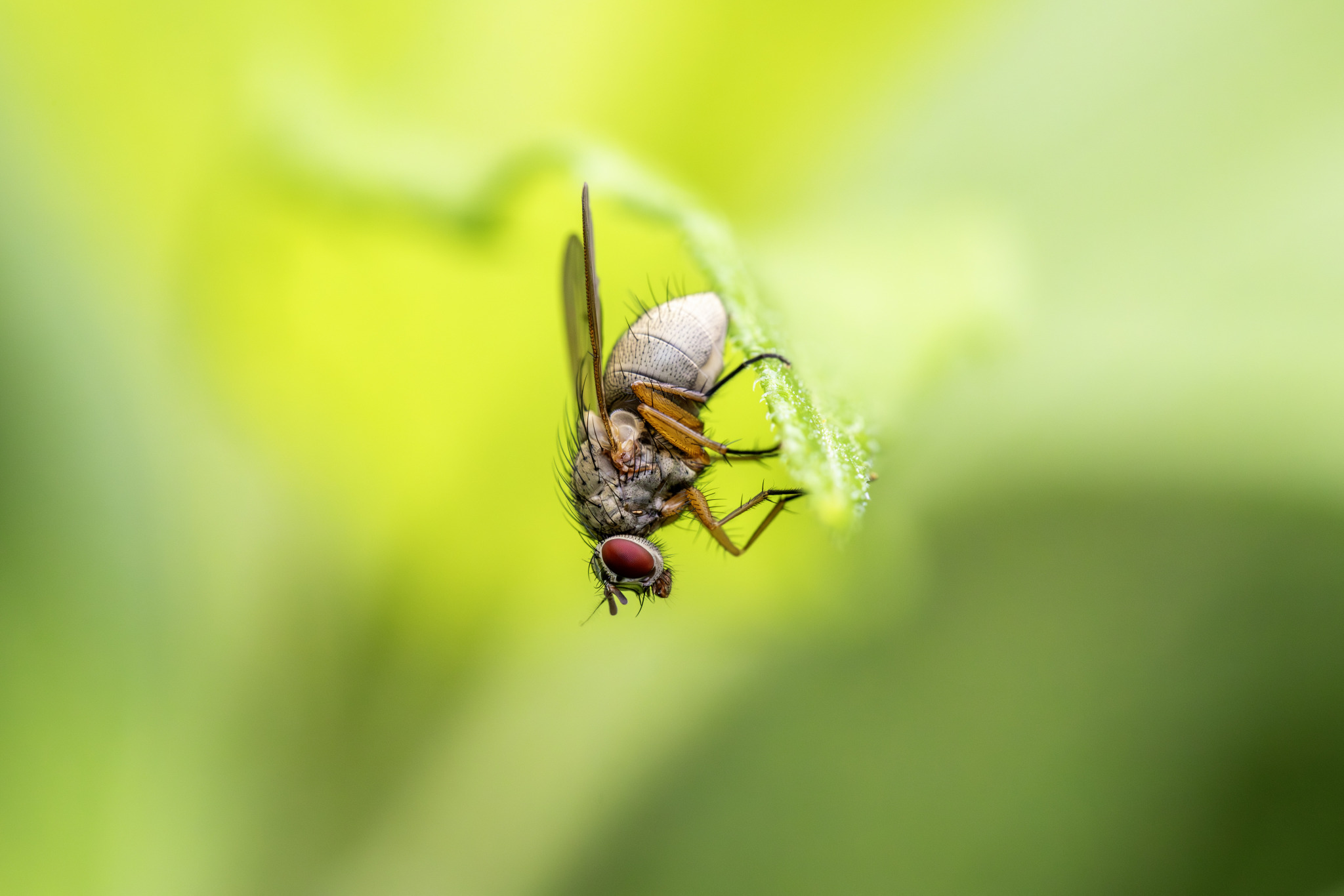The Tiger Fly (Coenosia tigrina) is a fascinating and predatory member of the family Muscidae, known for its distinctive hunting behavior and ecological role in controlling pest populations. Here’s an overview of this intriguing fly:
Description
- Appearance:
- Color: Tiger Flies are generally greyish or brownish in color, with a characteristic pattern of dark stripes or spots, giving them a somewhat tiger-like appearance.
- Size: They are relatively small flies, typically measuring around 4-7 millimeters in length.
- Body Shape: They have a robust body with long legs and large, prominent eyes, which are adapted for spotting and capturing prey.
Habitat
- Distribution: The Tiger Fly is found across Europe, parts of North America, and other temperate regions. It thrives in various habitats, including forests, grasslands, agricultural areas, and gardens.
- Preferred Environment: These flies are often found in environments where they can hunt for their prey, which includes other small insects.
Behavior and Ecology
- Diet:
- Adults: Tiger Flies are predatory and actively hunt other insects. They feed on various small insects, including flies, aphids, and other agricultural pests, playing a beneficial role in controlling these populations.
- Larvae: The larvae are also predaceous, feeding on small invertebrates in the soil or leaf litter.
- Hunting Strategy: Tiger Flies exhibit agile flight and keen vision, allowing them to effectively chase and capture prey mid-air or from vegetation. Their predatory nature and hunting skills are reminiscent of larger predators, scaled down to the insect world.
Conservation
- Status: The Tiger Fly is not currently considered threatened and is generally common within its range. Its adaptability to various environments and beneficial role in pest control make it an important species in ecological balance.
- Ecological Role: By preying on pest insects, Tiger Flies contribute to natural pest control in agricultural and garden settings, reducing the need for chemical pesticides.
Observing Tiger Flies
- Best Times: These flies are most active during the warmer months when their prey is abundant.
- Watching Tips: Look for them in areas with high insect activity. They are often seen darting quickly through the air or perching on leaves and flowers, scanning for prey.
Interesting Facts
- Beneficial Predators: The Tiger Fly’s predation on pest species highlights its importance in integrated pest management strategies, promoting healthier crop production and reducing chemical pesticide use.
- Aggressive Hunters: Despite their small size, Tiger Flies are aggressive hunters. They rely on their speed, agility, and excellent vision to capture prey, often in mid-flight.
- Life Cycle: The entire life cycle of the Tiger Fly, from egg to adult, involves predation. This continuous pressure on pest populations helps maintain ecological balance.
Summary
The Tiger Fly (Coenosia tigrina) is a small yet remarkable predatory fly that plays a crucial role in controlling pest insect populations. Its agile hunting behavior and predatory nature make it an asset in both natural and agricultural ecosystems. Observing these flies offers insight into the complex interactions within ecosystems and underscores the importance of natural pest control agents in maintaining ecological balance.
Visited 204 times, 33 visit(s) today
Views: 339
Subscribe to the newsletter:
